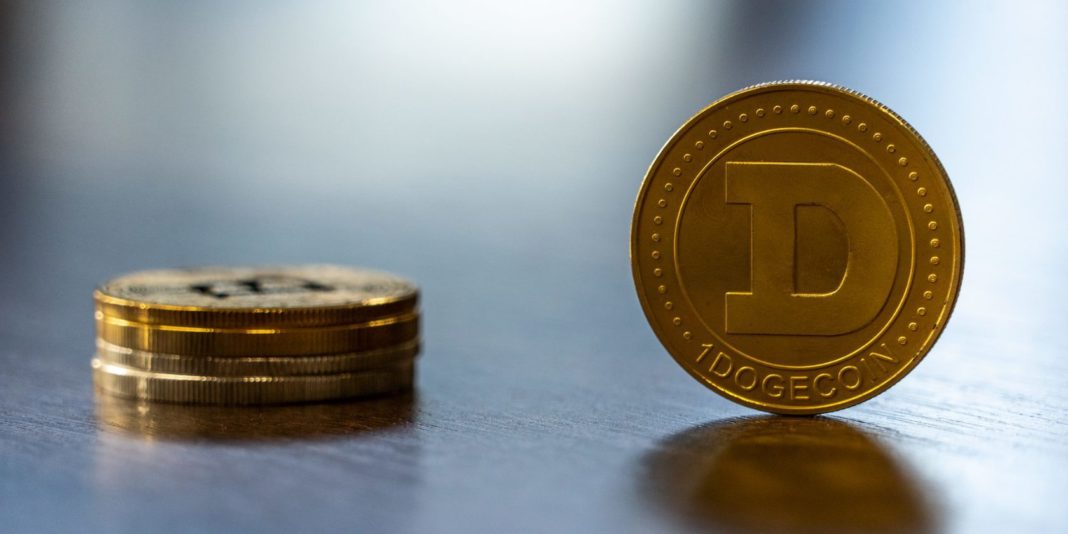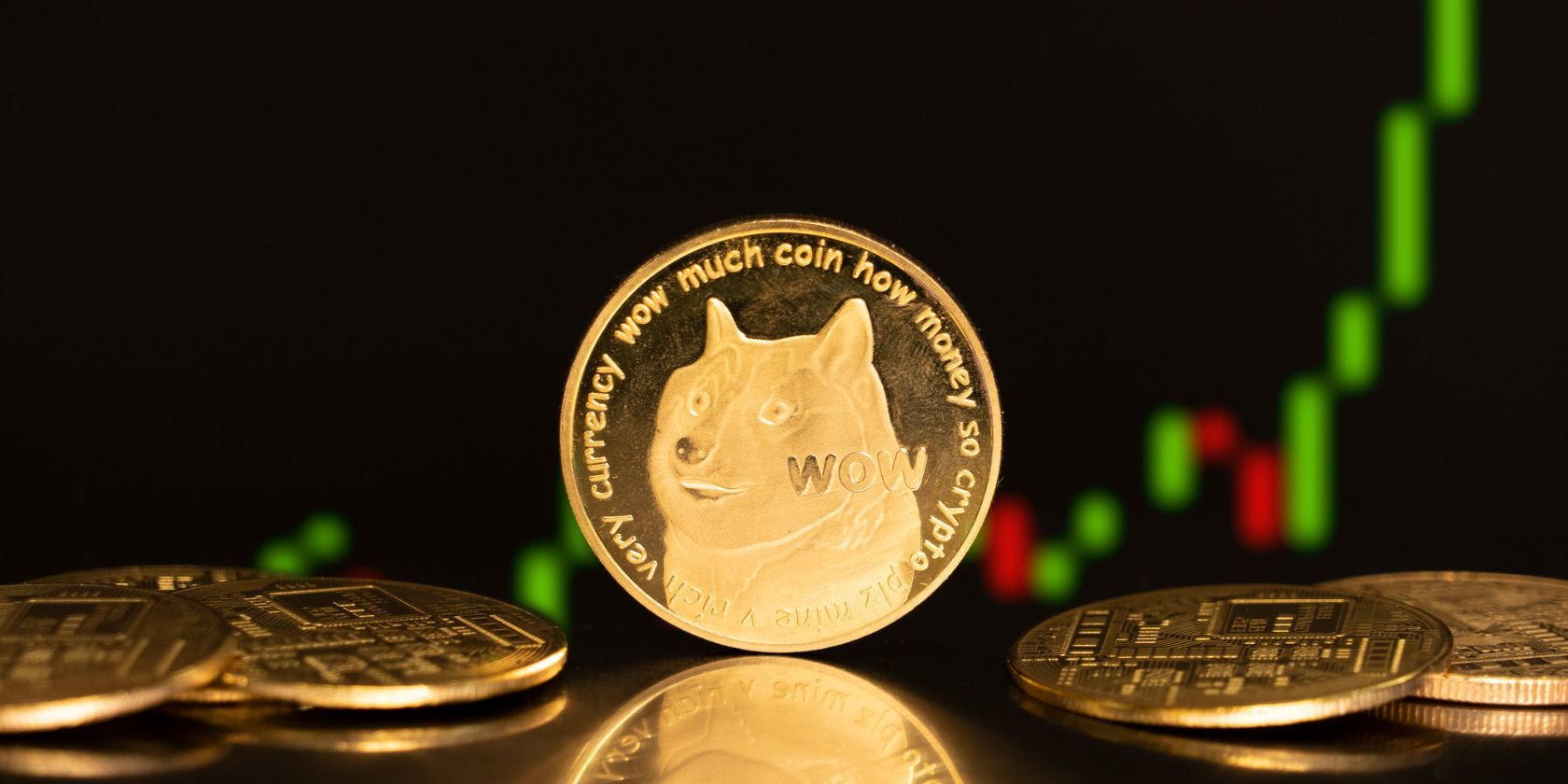Bitcoin and Dogecoin are two of the most popular cryptocurrencies out there today. Both have a huge market cap and trading volume, but how exactly do they differ? What separates these two cryptocurrencies from one another, and which comes out on top?
What Is Bitcoin (BTC)?
If you’re into crypto, you’ve undoubtedly heard of Bitcoin, the world’s first and most popular cryptocurrency, created by the anonymous Satoshi Nakamoto in 2008. Though Bitcoin was once almost worthless, it has risen through the ranks to become a highly valuable asset. Its price fluctuates constantly and once stood at almost $70,000.
Despite its ups and downs, Bitcoin has maintained its place at the top of the crypto ladder for years, and it doesn’t look like it will be changing anytime soon.
Bitcoin’s creator (or creators) has always remained anonymous, though they are known by the pseudonym “Satoshi Nakamoto.” Nakamoto still has a huge holding of Bitcoin, worth billions of dollars. But there’s a lot of speculation surrounding Bitcoin’s founder, and no one is entirely sure what is fact or fiction. What we do know is that Nakamoto is responsible for creating the world’s most popular cryptocurrency to date.
How Does Bitcoin Work?
Bitcoin exists on a blockchain, which is essentially a chain of encrypted data. Each Bitcoin transaction is recorded chronologically and permanently on the Bitcoin blockchain using the proof of work mechanism. Proof of work involves individuals known as miners solving complex computational problems to confirm transactions and secure the blockchain.
Miners are paid to keep the Bitcoin network secure, and these rewards can be huge if an individual miner secures a single block. However, miners often work in groups known as pools and share the rewards. The current Bitcoin mining reward is 6.25 BTC, which is around $100,000 at the time of writing, so it’s no surprise that over a million individuals have decided to take on this venture.
Some would say that Bitcoin’s proof of work mechanism is outdated compared to other mechanisms, such as proof of stake. This is because proof of work isn’t very energy efficient, has slower transaction times, and charges higher fees. Bitcoin is known to have frustratingly long transaction times, sometimes exceeding hours. Unfortunately, Bitcoin’s network is incredibly popular but not scalable.
In crypto, scalability refers to the ability of a platform to expand with and support increasing demand. For example, the Bitcoin network was once pretty quiet, but a lot has changed. Currently, over 250,000 Bitcoin transactions are processed daily, which is no small feat. But as the popularity of Bitcoin grows, it becomes harder for the network to keep up.
This is what gives way to long transaction times and high fees. Right now, thousands of Bitcoin transactions are sitting in the mempool, a sort of waiting room where transactions go before they’re confirmed. Transactions can remain in the mempool for a while, which has given way to Bitcoin transaction accelerators that one can use to speed up confirmation times. But this doesn’t address Bitcoin’s problem with scaling.
Bitcoin has a finite supply of 21 million BTC. Once this limit is reached, no more coins can be put into supply. This was an intentional move by Nakamoto and is supposed to help Bitcoin maintain value and hedge against inflation.
What Is Dogecoin (DOGE)?
Unlike Bitcoin, Dogecoin began as something of a joke, or a meme coin, poking fun at the perceived absurdity of cryptocurrency. Launched in 2014 by Jackson Palmer and Billy Markus, no one expected Dogecoin to become a legitimate cryptocurrency at the time of its creation.
Dogecoin is named such because of the viral “doge” meme that was incredibly popular online when Dogecoin was founded. The coin’s logo is the infamous doge image itself. A funny crypto based on a funny meme. Makes sense, right? Well, Dogecoin’s future was set to be very different from what its creators envisioned.
Though Bitcoin’s source code was entirely original, Dogecoin’s was based on that used for Litecoin, another proof-of-work cryptocurrency. Unfortunately, because Dogecoin was supposed to be nothing more than a joke, its creators didn’t bother creating any original code. So, like Bitcoin, Dogecoin also uses the proof of work consensus mechanism, requiring miners to verify transactions, circulate new coins, and secure the network.
This is an energy-intensive process but is still profitable for miners. However, because Dogecoin is worth considerably less than Bitcoin (which we’ll discuss more later), the mining reward is lower. At the moment, the reward for mining a block is 10,000 DOGE, which equates to around $800. This is still a decent amount but doesn’t come close to the current Bitcoin mining reward.
Dogecoin is also based on a proof-of-work blockchain and cannot scale very well. Though Dogecoin can process around 33 transactions per second, around twice that of Bitcoin, this still isn’t very impressive compared to many proof-of-stake cryptos like Solana and Avalanche.
Unlike Bitcoin, Dogecoin has an infinite supply. This means there is no cap on how many Dogecoins can be in circulation at once. There are currently over 130 billion Dogecoin in circulation, which is constantly increasing.
When it comes to security, Dogecoin is known to be a little less secure than Bitcoin, even though both use the same consensus mechanisms. After all, Dogecoin was launched as a joke, while Bitcoin had serious intentions behind it. More thought was put into Bitcoin’s security, and the network receives frequent updates to improve upon this element.
This isn’t to say that Dogecoin isn’t secure. Cryptocurrencies are based on blockchain technology designed to store data safely. But there are other factors, such as the development team and source code, that should also be taken into account.
Bitcoin vs. Dogecoin
So, between Bitcoin and Dogecoin, which is better? The answer to this depends on what you plan to do with either crypto. If you just want to mine, Bitcoin has a higher reward but a very high mining difficulty, meaning it is harder to mine a Bitcoin block than a Dogecoin block. In addition, both cryptos require an ASIC for mining, which can run up very high up-front and operational costs.
In terms of investment, Bitcoin and Dogecoin are exposed to volatility, meaning both can suffer losses in value at any given moment. Both use the same consensus mechanisms, too, so there’s not much difference. However, Bitcoin has a finite supply, which can help tackle the effect of inflation. So, this may turn out to be a good thing over time once the Bitcoin supply cap is reached.
Bitcoin and Dogecoin have their loyal community, but this doesn’t mean you have to choose one of the two. Many investors choose both cryptocurrencies as investment options, while others choose neither. Deciding which crypto is best for you depends on a variety of factors, including security, reputation, and price. It’s important to take note of these things before investing.
Bitcoin vs. Dogecoin: Can You Really Call a Winner?
It’s difficult to crown a winner between Bitcoin and Dogecoin. There’s no denying that both are volatile, but there are additional factors that differentiate them from one another. So, if you can’t seem to choose between the two, keep these factors in mind to help you make the most informed decision.








